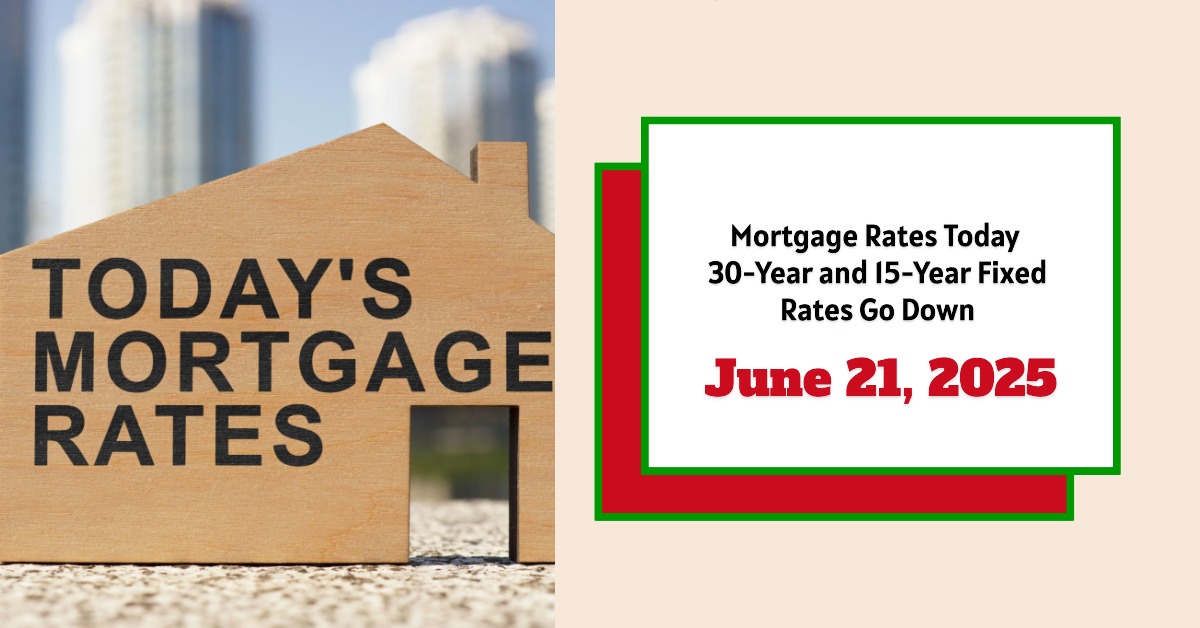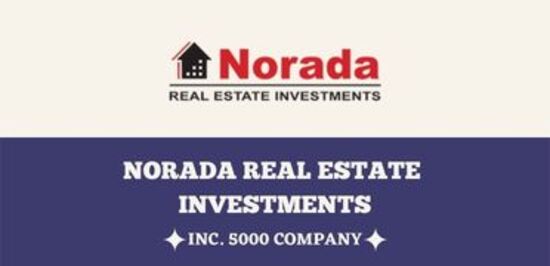As of June 21, 2025, mortgage rates have seen a slight drop. The national average for a 30-year fixed mortgage rate is now at 6.88%, down from 6.91% in the previous week. This decrease reflects recent trends in the housing market and indicates that current mortgage rates are lower compared to previous weeks. Similarly, average refinance rates for various loan types have either decreased or remained steady.
Today's Mortgage Rates – June 21, 2025: Rates Decline Slightly
Key Takeaways
- 30-Year Fixed Rate: Currently at 6.88%, down 3 basis points from the last week.
- 15-Year Fixed Rate: Now at 5.93%, experiencing a minor decline.
- 5-Year ARM: Dropped significantly to 7.05%.
- 30-Year Fixed Refinance Rate: Increased slightly to 7.15%.
- Market Trends: The Mortgage Bankers Association projects stability in mortgage rates for the near future.
Understanding Current Mortgage Rates
Today's mortgage rates are shaped by a variety of factors, including economic indicators, Federal Reserve policies, and borrower demand. On June 21, 2025, we can observe that borrowers are benefiting from slightly lower mortgage rates for the most common types of loans.
The current average rates for different mortgage types can be summarized as follows, based on recent data from Zillow:
| Loan Type | Current Rate | 1-Week Change | APR | 1-Week Change |
|---|---|---|---|---|
| 30-Year Fixed | 6.88% | -0.05% | 7.33% | -0.06% |
| 20-Year Fixed | 6.44% | -0.06% | 6.90% | 0.00% |
| 15-Year Fixed | 5.93% | -0.08% | 6.21% | -0.09% |
| 10-Year Fixed | 5.87% | -0.13% | 6.23% | -0.04% |
| 5-Year ARM | 7.05% | -0.36% | 7.74% | -0.12% |
| 7-Year ARM | 7.56% | +0.24% | 7.94% | +0.02% |
This slight downward trend in 30-year fixed rates is remarkable in an environment where larger economic concerns tend to keep interest rates variable. With the Federal Reserve signaling a hold on any rate hikes, this serves to reinforce expectations for stability in mortgage rates throughout the upcoming months.
Current Refinance Rates
For homeowners considering refinancing, the current rates are just as pertinent. The average for a 30-year fixed refinance rate has risen slightly to 7.15%, up 2 basis points from 7.13% observed last week. In contrast, the average 15-year fixed refinance rate has seen a subtle lift to 6.04%, marking a small increase of 1 basis point.
Here’s a breakdown of the current refinance rates based on recent data from Zillow:
| Refinance Type | Current Rate | 1-Week Change | APR | 1-Week Change |
|---|---|---|---|---|
| 30-Year Fixed | 7.15% | +0.02% | 7.33% | -0.06% |
| 15-Year Fixed | 6.04% | +0.01% | 6.21% | -0.09% |
| 5-Year ARM | 8.05% | N/A | N/A | N/A |
Refinancing opportunities remain attractive, even amidst the small increases observed in certain fixed terms. Homeowners wishing to tap into their home's equity or lock in a lower monthly payment can still find options that make it worthwhile.
Fixed Rate vs Adjustable Rate Mortgages
It’s essential to understand the difference between fixed and adjustable-rate mortgages (ARMs) when evaluating mortgage rates. Fixed-rate mortgages offer stability by maintaining a set interest rate for the life of the loan, which makes budgeting more predictable for homeowners. Conversely, ARMs can adapt over time, often starting with lower initial rates but may increase after a predetermined period based on market conditions.
Currently, the 5-year ARM has seen a notable decrease, landing at 7.05%, whereas the 7-year ARM has experienced a slight uptick to 7.56%. The decision between a fixed and adjustable rate mortgage often depends on individual preferences—especially with the potential variability in monthly payments for ARMs in the future.
Economic Factors Affecting Mortgage Rates
The broader economic environment significantly influences mortgage rates. Key factors include the state of the economy, inflation rates, employment statistics, and the actions of the Federal Reserve. Right now, the Fed is holding steady with interest rates, which reassures the market and keeps mortgage rates relatively stable.
One critical point to note is that mortgage rates tend to rise in line with inflation. Despite recent increases in inflationary pressures, consumers and economists alike are hopeful that a robust job market and continued domestic growth will help to keep rates within a manageable range.
Related Topics:
Looking Ahead: Market Predictions
With the economic indicators showing a mixed but cautiously optimistic outlook, mortgage rates appear poised to remain steady through the latter half of 2025 and into 2026. According to the Mortgage Bankers Association, there continues to be modest growth in home purchasing applications relative to last year, which is a promising sign for both sellers and potential buyers.
Fannie Mae's forecast suggests that rates may settle around 6.1% by the end of 2025 and further decline to 5.8% by 2026, indicating a slow but steady improvement in borrowing conditions. This outlook not only helps buyers plan their future home purchases but also comforts existing homeowners contemplating refinancing at more favorable terms.
The Importance of Shopping Around
In a fluctuating market, one of the best strategies for consumers is to shop around and compare offers from different lenders. Rates and terms can vary widely depending on the lender’s qualifications and policies. Homebuyers are encouraged to obtain multiple quotes to ensure they secure the best rate possible. Additional factors often come into play, such as discount points, closing costs, and lender fees, all of which can impact the total cost of the mortgage.
Refinancing: A Viable Option for Homeowners
Refinancing remains a viable option for many homeowners seeking lower rates or better payment terms. With mortgage rates hovering around their current levels, many homeowners may find it advantageous to refinance. Keeping track of rate trends can assist homeowners in deciding the best time to enter the refinancing market.
The current uptick in refinancing rates reflects broader economic conditions, yet many homeowners still find substantial savings. It's essential for homeowners to consider their long-term plans, as refinancing involves costs and should align with their financial goals.
Summary: Mortgage rates on June 21, 2025, showcase a slight decline for fixed-rate mortgages while refinancing rates are mixed, indicating that potential homebuyers and existing homeowners looking to refinance should closely monitor the market. Although there is no rush, as current trends suggest that rates will likely stabilize, making smart decisions today can have lasting benefits in the future.
Invest Smarter in a High-Rate Environment
With mortgage rates remaining elevated this year, it's more important than ever to focus on cash-flowing investment properties in strong rental markets.
Norada helps investors like you identify turnkey real estate deals that deliver predictable returns—even when borrowing costs are high.
HOT NEW LISTINGS JUST ADDED!
Connect with a Norada investment counselor today (No Obligation):
(800) 611-3060
Also Read:
- Will Mortgage Rates Go Down in 2025: Morgan Stanley's Forecast
- Expect High Mortgage Rates Until 2026: Fannie Mae's 2-Year Forecast
- Mortgage Rate Predictions 2025 from 4 Leading Housing Experts
- Mortgage Rates Forecast for the Next 3 Years: 2025 to 2027
- 30-Year Mortgage Rate Forecast for the Next 5 Years
- 15-Year Mortgage Rate Forecast for the Next 5 Years
- Why Are Mortgage Rates Going Up in 2025: Will Rates Drop?
- Why Are Mortgage Rates So High and Predictions for 2025
- Will Mortgage Rates Ever Be 3% Again in the Future?
- Mortgage Rates Predictions for Next 2 Years
- Mortgage Rate Predictions for Next 5 Years
- Mortgage Rate Predictions: Why 2% and 3% Rates are Out of Reach
- How Lower Mortgage Rates Can Save You Thousands?
- How to Get a Low Mortgage Interest Rate?
- Will Mortgage Rates Ever Be 4% Again?



